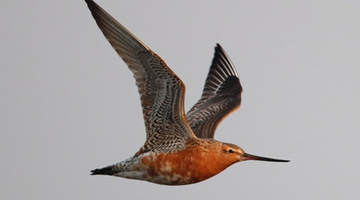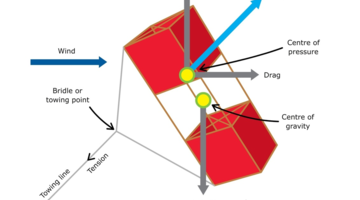

Have you ever wanted to fly? To soar above valleys and mountains, cities and oceans, feeling the wind whipping against your face? Flight has fascinated humans for as long as we have looked ...
READ MORE

For thousands of years, people have wanted to fly. Our legends and fairy tales are full of humans and animals that can fly – effortlessly gliding through the air. In real life, of course, no one ...
READ MORE

For a plane or bird to fly, its wings must produce enough lift to equal its weight. Most wings used in flight are a special shape – called aerofoils (or airfoils). This shape is needed to help ...
READ MORE

In this activity, students will learn about some kite history and how kites fly before making and flying a kite themselves. By the end of this activity, students should be able to: use some kite ...
READ MORE

In this activity, students explore how flight has developed over time with discussion about trends and future possibilities. By the end of this activity, students should be able to: explain in a ...
READ MORE

In this activity, students discuss what things can fly and how this happens. They work towards identifying some key characteristics of flight. By the end of this activity, students should be able ...
READ MORE

Are you looking for ways to teach forces? If you’re new to the Science Learning Hub, you may want to start with our introductory video on teaching physics. Help, I’m teaching physics Discover ...
READ MORE

Many resources on the Science Learning Hub explore ideas relating to the Physical World strand in the NZC. This online PLD session recorded on 11 March 2015 shows primary teachers how to navigate ...
READ MORE

In this recorded professional learning session, Greta Dromgool and Ted Cizadlo will build your confidence to teach the Physical World. The New Zealand Curriculum achievement objectives for this ...
READ MORE
PhD student Jesse Conklin, from Massey University, explains how you can tell when godwits are getting ready to migrate. He talks about their preflight behaviour, and you can hear the calls they ...
READ MORE
Massey University’s Dr Phil Battley describes godwits in flight including flapping ability, speed, flying altitudes, streamlining, time taken for non-stop flight and V-formation flight Point of ...
READ MORE
Dr Phil Battley, from Massey University, describes what godwits have and do to be able to make the long flight.
READ MORE

Lime, produced by calcining limestone, plays a key role in a multitude of industrial, manufacturing and agricultural processes. This interactive outlines the process steps taken at the McDonald’s ...
READ MORE

This slideshow from the webinar Physics made simple – gravity provides additional support for the video tutorial. Use the Slideshow menu for further options, including view full screen, and go ...
READ MORE

This interactive explores the science concepts that underpin knowledge about birds’ physical features and how they help birds live in their environment.
READ MORE